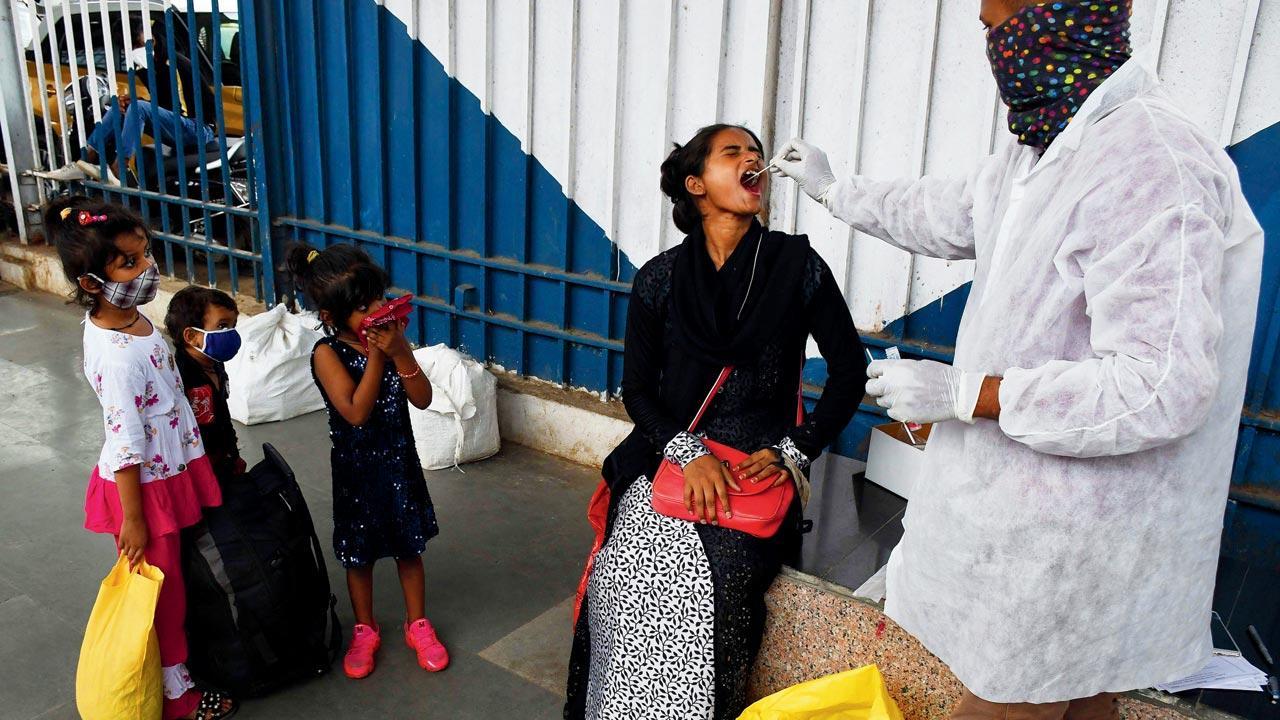People are mistaking the viral disease for seasonal flu and going for test only after a few days, ending up infecting more members, say civic officials

Cases have remained low despite the BMC stepping up testing. Pic/Ashish Raje
Amid signs of the pandemic’s second wave reaching its last leg—cases in the city have remained less than 300 for the past two weeks—about 90 per cent of the fresh infections are being reported from high-rises. Civic officials say families are mistaking COVID for seasonal flu and go for the test only after a few days, ending up infecting more members.
ADVERTISEMENT
In the first wave, most cases had been found in slum pockets, but the start of the second wave, which was in February, threw up a different trend, with a large number of people in non-slum areas contracting the virus. In the last citywide sero survey, it had been found that antibodies in the slum population had decreased.
Experts say slum dwellers and children could be at greater risk if a third wave strikes, though more non-slum areas are seeing cases.
Also Read: Covid-19: Mumbai’s TPR rises after recording second wave’s lowest
In L ward comprising Kurla and Chembur, where 85 per cent of the population lives in slums, most cases are from non-slum areas. “The pattern is the same as the beginning of the second wave. Only sporadic cases are reported from slums. Over 90 per cent of cases are from buildings. After contact tracing, other family members were found positive,” said Dr Jitendra Jadhav, medical officer of the ward.
K West—Jogeshwari W, Andheri W and Vile Parle W—tops the list of ward-wise cases. Here also the pattern is similar. “Almost 93-94 per cent of cases are from buildings. Unlike earlier, the cases are mostly clustered in families and not spread across the population,” said Dr Prithviraj Chauhan, assistant commissioner of K-West ward.
Mahendra Ubale, assistant commissioner of M East ward, which has Mankhurd and Govandi within its limits, said, “Most of the cases are from residential complexes like BARC and RCF. There are hardly any cases reported in slums which comprise most of the parts of the ward.”
Dr Jadhav attributed the cases in family clusters to misinterpretation of the symptoms. “In the rainy season, people think it’s common flu and wait for a few days before going for a COVID-19 test. By that time, other members of their families get infected with the virus. The only positive thing is people remain indoors even if they think it is common flu and that’s why it does not spread beyond families.”
94
Percentage of cases reported in high-rises in K-West ward
 Subscribe today by clicking the link and stay updated with the latest news!" Click here!
Subscribe today by clicking the link and stay updated with the latest news!" Click here!






